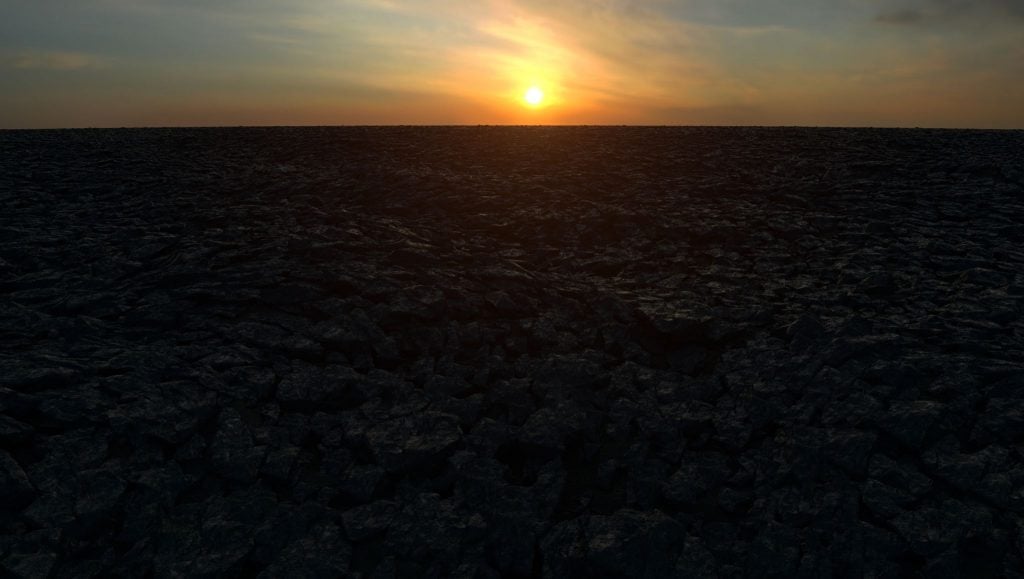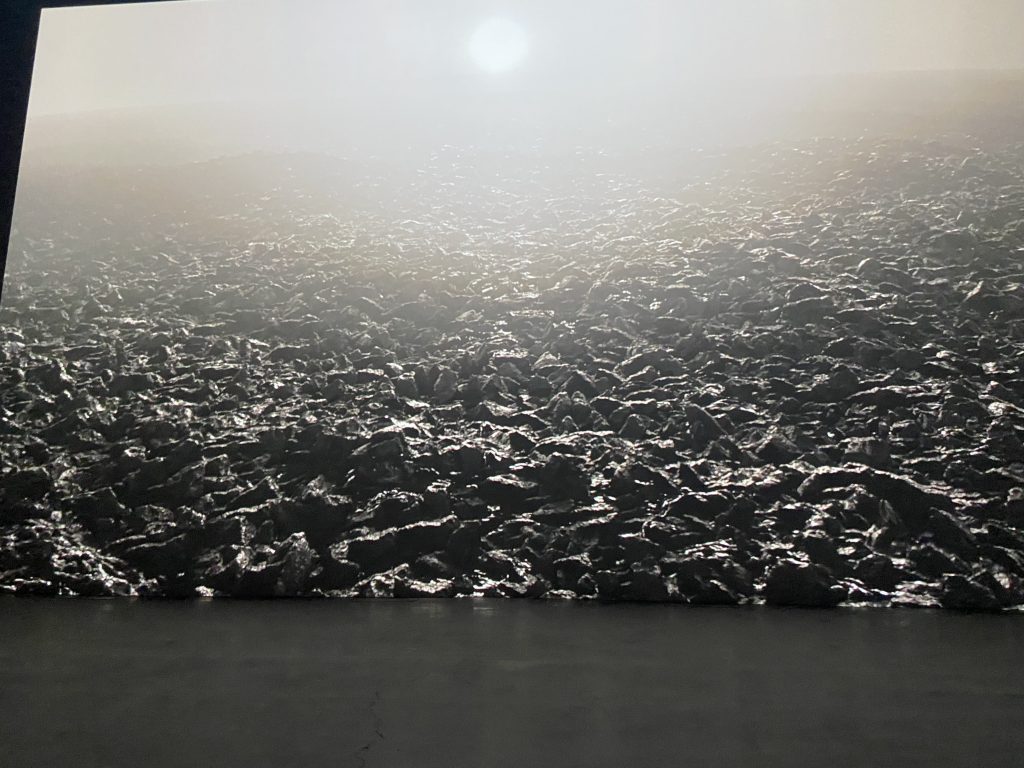Art & Exhibitions
Artist Arthur Jafa Takes an Abstract Turn in His First New Film Since His Golden Lion-Winning Project for the Venice Biennale
The film is on view for a month at the former site of Gavin Brown's Enterprise.

The film is on view for a month at the former site of Gavin Brown's Enterprise.

Annie Armstrong

This weekend, a beloved New York art institution came back for one night in a big way. Up on 127th Street, Gavin Brown’s Enterprise reopened its doors for the first time since shuttering in summer 2020 to present the American debut of artist Arthur Jafa’s new film, AGHDRA (2021).
Though the first floor offered its own excitements—Rirkrit Tiravanija cooked masses of paella for the crowd, followed by a party complete with several dance-offs between artists—the fourth floor of the space was where the magic really happened.
At this stage in Jafa’s career, any new work is something of an event. This film is his first in three years and follows Love Is The Message, The Message Is Death (2016), which made him a sensation, and The White Album (2018), which won the Golden Lion at the 2019 Venice Biennale. It arrived in New York with little fanfare—and no advance press attention—via an Instagram post on Jafa’s page.
AGHRDA (2021) significantly slows down the artist’s typical rapid-fire collaged imagery set to a maximal score, instead calling on viewers to lose themselves in one droning horizon. Unlike his previous work, its imagery is entirely computer-generated, not found.
Jafa’s visual language may have shifted toward the abstract in this piece, but it’s also part of the same conversation he’s been having for years. This time around, he interrogates Afrofuturism as the very matter that creates Earth breaks down, while calling back to the transatlantic slave trade.
A portion of the new film, then still in progress, was previewed at a MoMA PS1 event in January 2020, and the full version debuted at Jafa’s retrospective at the Louisiana Museum of Modern Art this past spring. It is on view in New York until December 5.

Arthur Jafa, AGHDRA (2021). Photo: Annie Armstrong.
For a lengthy 85 minutes, AGHDRA will keep you staring directly at the sun. Computer-generated waves emulate the ocean turned black, the texture of which has alchemized into a material that looks like coal or cooled lava. The sun moves through both day and night in a toxic haze.
The longer you watch, the more you feel your breath constrict. Eventually, the waves periodically rise to block out the sun—not quite providing relief from it, but rather instilling a feeling of dread. Earlier this year, Jafa foreshadowed AGHDRA‘s darker tone to the New York Times, saying, “I’m an undertaker. I don’t do the uplift thing.”
The film is a notable evolution for Jafa, who has expressed discomfort with the way Love Is the Message, The Message Is Death, a found-media video collage about Black life, was so enthusiastically embraced by white audiences. (“People were getting this eight-minute epiphany,” he explained. “Even when people said, ‘Oh I cried,’ the very cynical part of my brain suspected some kind of arrested empathy with regard to the experience of Black folk.”)
After the 2020 murder of George Floyd, a coalition of 15 museums looped the film on their websites for an entire weekend, its searing jump-cut clips of Black triumph and injustice flashing across screens in the homes of people around the world.
Jafa’s follow up, the White Album, brought his raw Internet-surfing style to whiteness, juxtaposing clueless YouTube pundits, a sinister paramilitary type, and even his former dealer Gavin Brown.
With AGHDRA, Jafa continues to resist easy consumption and easy answers. After 85 minutes of staring into Jafa’s sun, perhaps surface-level fans of his work will walk away with a new understanding of what he has to say. But it’s clear they are no longer, and may have never been, the artist’s primary audience.
“Arthur Jafa: AGHDRA” is on view at 439 W 127th Street, New York, through December 5.